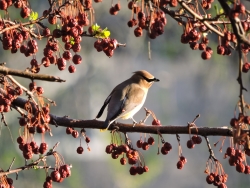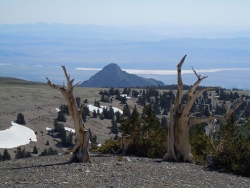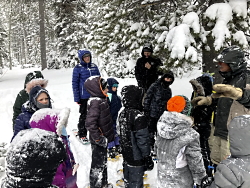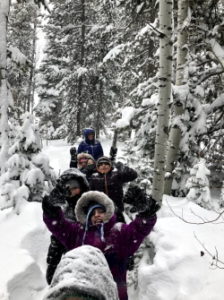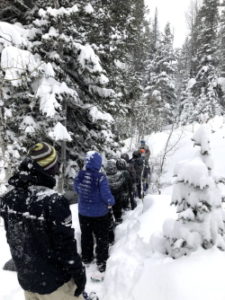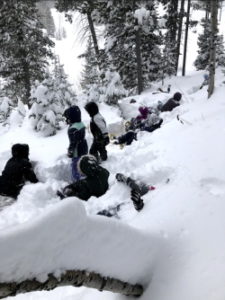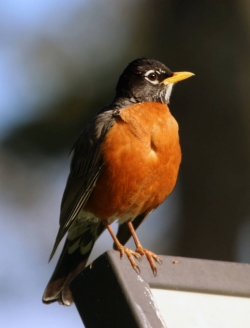
Turdis migratorius
Finding a high point to sing and be seen
Courtesy US FWS
Peter Pearsall, Photographer
For me, my first indicator of spring is the call of the male American Robin who warbles from the top of the nearest thing with a top to warble from, melting away the dark with his song. He will announce himself as Spring incarnate, and honest be told I think he really is. He is staking his territory, newly thawed, full of history and habitat and hope. Warble on, dude.
The air brings music too, our next sign of the season. It is always in harmony with the budding willow velvet, emerging daffodil spears, and wild bedheaded leaves which survived winter under the weight of its blanket. It’s the kind of music that sends shivers up your spine and reminds you that the sun is here, yes, but don’t have your sweater too far away. You’ll need it.
The last in the choir of Spring is the low basso profundo of good mud; that sound you can smell. It’s not the mud caused by summer rainfall which is dainty underfoot and easily run off, but the mud which strives to be that of the marshlands. It is not privy to splishes nor splashes, but instead grips you by the ankle like a playful toddler upon their parent, and when pulled up, if you’re lucky enough to still have your boot, releases everyone’s favorite sound to make in a packed van. It echos with each step. The juvenile earth cannot be quelled.
So this spring, keep your ear to the ground, upon the wind, and towards the trees for the music of the free world. It is the wellspring source of all our own imitated humanly scores, and so will always be true. Happy Spring everyone. Get outside and lose a boot. You’ll be glad you did.
I’m Patrick Kelly and I’m Wild About Utah
Credits:
Images: Courtesy US FWS, Peter Pearsall, Photographer https://digitalmedia.fws.gov/digital/collection/natdiglib/id/29913/rec/10
Audio: Contains audio Courtesy & Copyright Kevin Colver and J. Chase and K.W. Baldwin.
Text: Patrick Kelly, Director of Education, Stokes Nature Center, https://www.logannature.org
Included Links: Patrick Kelly & Lyle Bingham, Webmaster, WildAboutUtah.org
Additional Reading
Wild About Utah, Posts by Patrick Kelly
Stokes Nature Center in Logan Canyon, https://www.logannature.org/
Winter-Lux Aeterna, György Ligeti, A Capella Amsterdam, Daniel Reuss and Suzanne van Els, Posted December 9, 2009, https://www.youtube.com/watch?v=-iVYu5lyX5M
Spring-Peer Gynt, Suite No.1, Op.46 – 1. Morning Mood, Edvard Grieg, Berlin Philharmonic Orchestra, Herbert von Karajan, Deutsche Grammophone Stereo 410026-02, Posted July 30, 2018, https://www.youtube.com/watch?v=8fATAQtY9ag
Summer-Scheherazade, Rimsky Korsakov, Philadelphia Orchestra, Riccardo Muti, Posted April 10,2020 by Matthew Roman, https://www.youtube.com/watch?v=V4rylqeyD5c
Fall-The Fall of the Leaf (1963): II. Vivace, Imogen Holst, Posted September 21, 2017, Thomas Hewett Jones, https://www.youtube.com/watch?v=llkFjUm3nPI
Also suggested by Patrick:
The Trout(Die Forelle), Franz Schubert transcribed by Franz Liszt, Evgeny Kissin, Recorded at the Salle des Combins (Verbier, Switzerland), on 26 Jul. 2013. © Idéale Audience / MUSEEC, Medici.tv, https://youtu.be/HkGcNt3ohog


